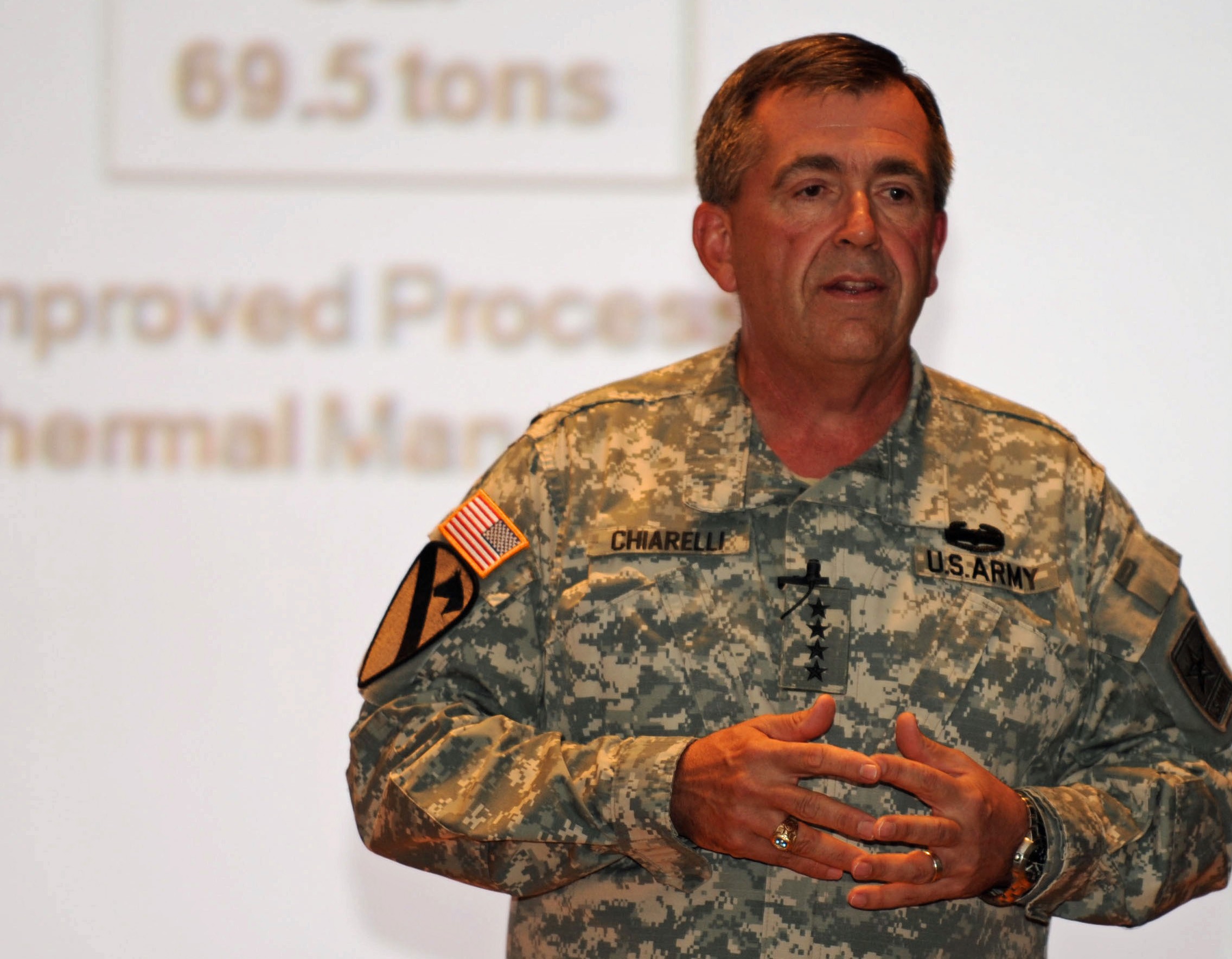FORT KNOX, Ky. (Army News Service, May 25, 2010) -- "The Armor Center will cease to exist in one week," said Army Vice Chief of Staff Gen. Peter Chiarelli in his opening remarks to the audience gathered at Waybur Theater for the Armor Warfighting Conference last week.
"It's a bittersweet occasion for many of us. But I would remind you that the tank school was at Fort Benning, (Ga.) from 1932 to 1938, so we are really just reclaiming what was ours," he added to the obvious amusement of many.
More than a few have expressed concern that Armor will be swallowed up by the much larger Infantry with the integration of the two branches into the Maneuver Center of Excellence at Fort Benning. Chiarelli addressed that apprehension.
"Some of you are concerned that the Armor branch is dead, but I assure you that Armor branch is alive and well," he said. "It's a key element of MCOE. At the MCOE, we will train as we fight - together - just as we win together."
In his discussion of force protection and modernization issues, Chiarelli included some of the directives from Secretary of Defense Robert Gates, to include clarification of the role of Mine-Resistant Ambush-Protected vehicles. That direction makes MRAPs available for home-station training.
Chiarelli also talked about the need for a new ground combat vehicle which must provide versatility as well as protection. The Army wants the new GCV to provide the underbelly protection of an MRAP, the offroad mobility of a Bradley, and the urban and operational mobility of a Stryker vehicle, while still carrying 12 Soldiers and weighing 70 tons or less.
The more features that are added to the GCV, the more weight it takes on, which limits its mobility. However, Chiarelli said that in the time it will take for the vehicle to move through the acquisition pipeline - seven years -- perhaps lighter materials would become available and allow the vehicle to weigh less without sacrificing any elements. The GCV should be a universal vehicle, Chiarelli stressed, but not a sofa bed, which is neither a good sofa nor a good bed.
In addition, Chiarelli stressed the importance of flexibility for a GCV, which needs to include design growth potential in order to add technologies as they become available and affordable; precision lethality; superior over like systems; and network integration.
"The network is a hub of the Army's modernization program," he said. "The network ties everything together, handles constant transmission of voice and data information to provide the situational awareness that every Soldier needs."
In a recent exercise, however, Chiarelli said the networks did not interface well.
"Any Soldier anywhere should be able to post to the network," Chiarelli asserted, although he admitted many others feel such broad access would compromise security.
Chiarelli spent time discussing his goal to change the culture of the Army with regard to the macho attitude that often prevents Soldiers from asking for help with brain injuries.
The Army's Wounded Warrior program is caring for 6,500 Soldiers, as of May 1. Of those, 59 percent carry a diagnosis of traumatic brain injury or post-traumatic stress disorder. Chiarelli showed a video made by Medal of Honor recipients who discussed the resources available to modern Soldiers that were not available to them.
One of the narrators urged Soldiers to get help if they needed it - otherwise, they would allow the enemy to defeat them at home.
Chiarelli discussed the causes of TBI as well as new protocols that are being adopted to make screening more thorough. Progress is being made in TBI cognitive testing before and after deployments, with a pilot program started at Tripler Medical Center, according to Chiarelli.
He closed his remarks by coming full circle to speak to those worried about Armor's role on the battlefields to come.
"The armor and cavalry force has a huge future in our Army," he said.


Social Sharing